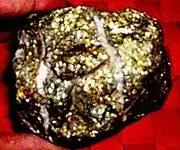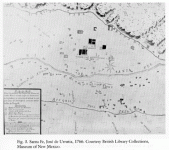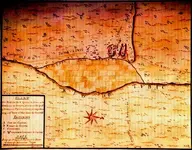Greetings Lamar and everyone,
Lamar wrote:
No, that argument won't work. It's already been proven that every like product thus far encountered between the Old World and the New World shows way too much variation between the strains to have come from the same regions at any time less than 30K years ago.
I respectfully disagree with you on this point amigo, and have researched the matter for years now. The Old World cotton found being cultivated by Amerindians was certainly not so distantly related as to require a 30,000 year span. That is only a single product mentioned, we have not even touched on several such as sweet potatoes.
Lamar also wrote:
So far they've had zero success in trying to tie the Old World and New World communities together before the age of Columbus, with very limited success thus far being uncovered in Iceland with the Viking settlements there.
I respectfully disagree with you on this point as well my friend, for archaeologists have indeed had some success in finding SOME evidence of cross-Atlantic and cross-Pacific contact taking place in ancient times. Are you familiar with the works of Prof. Mark McMenamin? I could suggest a couple of his books that detail the evidence if you like.
Lamar also wrote:
The mummy which was discovered had traces of a substance which contained an alkaloid similiar in composition to modern cocaine, however it was not extracted from the coca leaf.
Lamar I am not sure where you are getting your information, but this is mistaken. There is a great deal of material on this subject available online, including the astonishing discovery of American tobacco leaf inside the wrappings of an Egyptian mummy, namely Ramesses II a pharaoh no less. Here is one example:
http://www.whitedragon.org.uk/articles/pharoahs.htm
(I have Dr Babalova's original article and it is also probably online somewhere if you are interested)
I am not sure why you have focused in on Cabral but
his own report of the discovery was that it was accidental due to storms driving him across the Atlantic while trying to sail around the horn of Africa. Are you claiming that NO accidental crossings of the Atlantic (or Pacific) have occurred within the historical period?
Accidental discoveries have led to important historical events. For instance, a Norseman named Gunnbjorn was driven to Greenland in 876 AD by a storm, but did not bother to go ashore - however Eric the Red heard the story and later went to Greenland and is today honored with the discovery; another Norseman named Bjarni Herjulfsson was driven past Greenland (his intended target) by storms and sighted new lands to the west in 986 AD but again did not go ashore, but told the tale to a young man named Leif Eriksson who later went on to "discover" those lands ~ 1000 AD; the French captain Jean Cousin was driven across the Atlantic by violent storms while trying to sail south around Africa and spotted Brazil, but failed to go ashore so remains a footnote to history. About 42 Japanese and/or Chinese Junks were driven across the Pacific in the 1700s and 1800s by storms. Accidental crossings of the oceans occurs, believe it or not. Then consider that Diodorus Siculus and Aristotle both stated that the Carthaginians ACCIDENTLY discovered what can only be America after violent storms drove some of their ships west from Africa, where they were planting colonies.
I could go on here but do have to save a little for my book, however a short version is available if you are interested, your local library might have a copy, the title is "Underground,The Disinformation Guide to Ancient Civilizations, Astonishing Archaeology And Hidden History" and the editor is Preston Peet. (Amazon has it also)
http://www.amazon.com/Underground-D...chaeology/dp/1932857192/?tag=treasurenet01-20
My own contribution is titled "The Secret Land" but there are a number of alternative history theories by such authors as Erik von Daniken, Graham Hancock, Andrew Collins, Robert Shoch and others. Some of the ideas are "pretty far out" in my view, but a fascinating read.
Lamar mi amigo you see there is a rather delicate problem with the widely-accepted Isolation Theory version of history - for
THERE MUST BE NO EVIDENCE OF ANY KIND OF CONTACT for this theory to be true. A single item, DNA or linguistic tie then proves this theory false. If I may, I would suggest a few web sites that you might find interesting (that is if you are open to the idea that the Isolation Theory might possible be wrong):
http://www.econ.ohio-state.edu/jhm/arch/outliers.html
http://www.iwaynet.net/~wdc/
http://www2.privatei.com/~bartjean/mainpage.htm
(especially this part of Farley's work, "The Coincidence of the Coins":
http://www2.privatei.com/~bartjean/chap11.htm
Before you find the problems with the supposed ancient Hebrew coins found in KY-Tenn area, I already researched this particular matter and they have been proven to be modern fakes, with the single exception of one example that was not examined by an expert, this one remains simply un-proven either way. The numerous ancient Roman coins found in the Americas, in MOST cases, can be dismissed as modern losses, but in the case of SOME ancient coins (Punic, Kyrenian, Thurium, Numidian specifically) there is reason to believe they were deposited in the Americas in ancient times.
I would also like to suggest a few books, if you are interested mi amigo Lamar, including one already mentioned above,
"
In Plain Sight, Old World Records in Ancient America" by Gloria Farley,
"
America BC" by Dr. Barry Fell
"
Bronze Age America" also by Fell,
"
Saga America" ditto
(I have my own problems with Farley's ideas, in particular the identification of an elephant with Egyptians, ignoring the more likely candidate - Punic visitors, and with Fell who seemed to have considerable interest in all things Celtic, again ignoring the more likely candidates, Phoenicians and Punic visitors, who would in all likelihood have made use of hired Celtic mercenaries as is recorded in history)
"
Did the Phoenicians Discover America?" by Thomas C. Johnston (tough to find)
"
Long Before Columbus, How the Ancients Discovered America" by Hans Holzer
This is just for starters, again also only if you are interested. Thank you for your interest amigo, and I close with my usual - good luck and good hunting to you (and everyone reading this), I hope you find the treasures that you seek.
your friend,
Roy ~ Oroblanco










